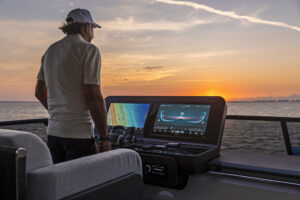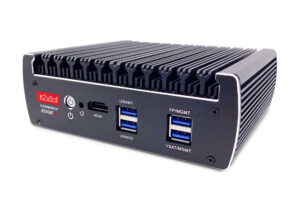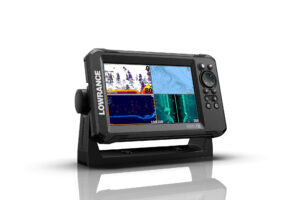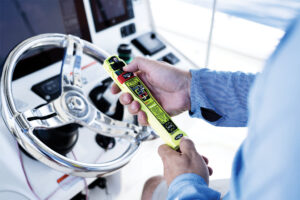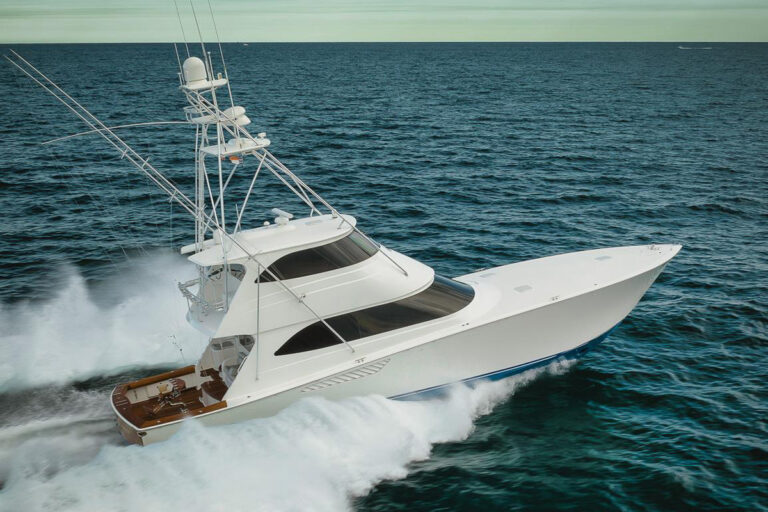
Back in 2008, my friend and mentor Peter invited me out for a sail off Marblehead, Massachusetts. Given that Peter was also my boss (at the time) and the day in question was a workaday Wednesday, my answer was a resounding yes, even if the agenda involved calibrating his new autopilot. We motored out of the harbor, Peter fiddled with buttons and, I slowly began spinning (many) circles. Colorful Kiwi cuss words erupted as Peter, a New Zealander, tried to get the autopilot to cooperate. No dice. Luckily, the breeze arrived, and we had a fantastic sail, but I couldn’t help but wonder if there wasn’t an easier calibration process.
Now, thanks to today’s solid-state compasses, there is, and the benefits extend far beyond autopilots. Fluxgate compasses have long served as the go-to heading-reference equipment, as they output their data via an electronic signal that’s easily heard by other systems and instrumentation. The trouble, however, is that fluxgate compasses are susceptible to interference issues, including latitude changes or proximity to ferrous metals as well as “gimbal lock” in rough seas. They also typically use a once-per-second (1 Hz) reporting rate, which can be painfully slow when horsepower meets rudder angle (some fluxgate compasses, such as models from Digital Yacht and KVH, report at 10 Hz).
Fortunately, today’s solid-state compasses provide faster, more accurate information in all seaways, latitudes and temperatures. Solid-state compasses have benefited from the advent of Altitude Heading Reference System technology, which the aviation industry developed to replace mechanical gyroscopic instruments, and which the consumer- electronics industry later adopted for use in the inertial navigation systems found in smartphones and tablets. This technology relies on either solid-state or microelectromechanical systems (MEMS; essentially microscopic mechanical devices with moving componentry, a microprocessor and microsensors) to measure pitch, roll and yaw, making them ideal for marine applications.
Today’s solid-state compasses, including Raymarine’s EV1 ($600) and Simrad’s Precision 9 ($645), rely on MEMS componentry, including accelerometers, which measure angular velocity in all three axes; gyroscopes, which monitor pitch, roll and yaw; and magnetometers, which measure azimuthal information. Together, these components deliver fast (ballpark 10 to 30 Hz), highly accurate (ballpark +/- 1 or 2 degrees) heading information that’s delivered electronically to the vessel’s NMEA 0183 or NMEA 2000 backbone.
“Our Precision 9 is fast to stabilize at a new heading after a course change,” says Mark Harnett, Simrad’s product manager. “This translates to the autopilot, which stabilizes faster [after a turn] and gets onto the new heading faster.”
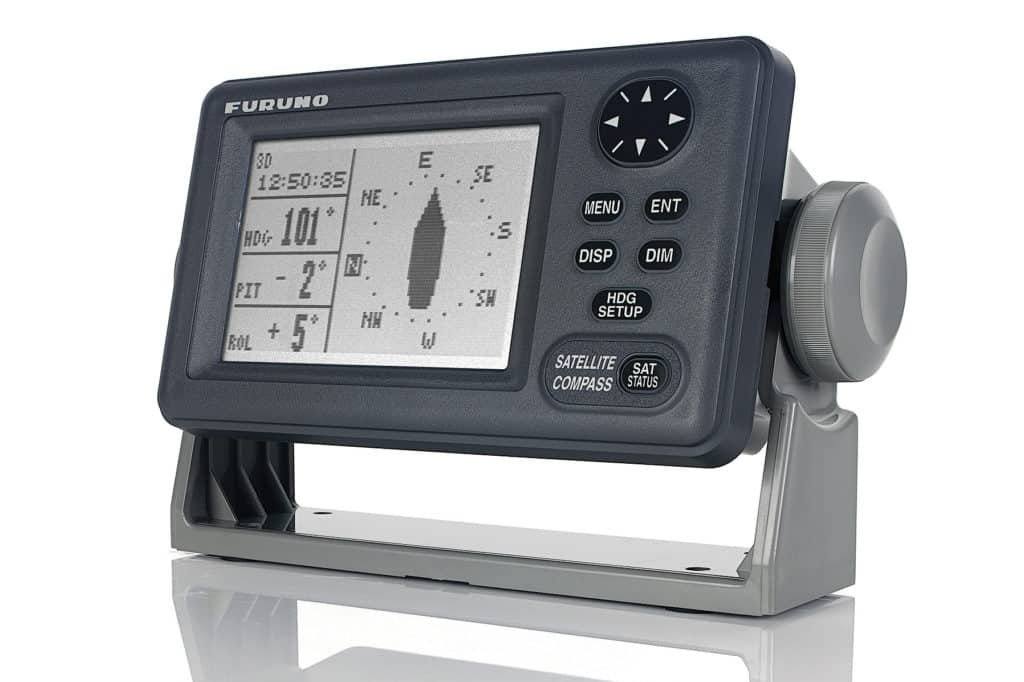
Satellite compasses (aka GPS compasses) use information from GPS satellites — rather than Earth’s magnetic field — to determine heading information, albeit at a higher cost than most solid-state compasses. Satellite-compass transducers typically employ two or three GPS antennas, which listen to the same satellite. (Some manufacturers, including NKE, separate these antennas into discrete installations for greater accuracy.) To determine a vessel’s heading, the system measures the difference between the GPS positions that the two antennas record. A third antenna — such as the one found on Furuno’s SC30 or SC50 compasses, which retail for $2,695 and $4,995, respectively — is used to reduce the effect of the yacht’s pitch, roll and yaw on the compass’ heading information. Satellite compasses can provide heading accuracy to within +/- 0.5 to 1 degree.
According to Jim McGowan, the Americas marketing manager at FLIR Maritime, Raymarine’s EV1 removes vessel movement from the heading information.
“Our new Sensor Fusion software stabilizes the navigation data that comes through the network,” he says. “Pitch and roll will affect the GPS sensor, which is moving as the boat moves, and will sense change as speed or course over ground changes. Now, we send the GPS data through the EV1, which corrects the data [for vessel movement] and sends it to the MFD.” Interestingly, the EV1 can perform the same corrections to wind data, which is important to sailors.
“The biggest jump [over fluxgate compasses] is in autopilot performance,” McGowan says, adding that older autopilots could only see heading information. When the EV1 is paired with Raymarine’s Evolution autopilot, the system can anticipate vessel movement and act pre-emptively to maintain course.
Harnett agrees with McGowan’s assessment of autopilot improvement and reports that when the Precision 9 was tested against Simrad’s RC42 compass ($645) and its commercial-grade GC80 gyrocompass ($15,000), “the Precision 9’s performance was much closer to the GC80 than the RC42.”
While sailors will appreciate that solid-state compasses can deliver heel-angle information, all yachtsmen will appreciate that they simplify the calibration and autopilot setup processes.
Many solid-state compasses offer setup wizards, and some can self-learn your vessel’s characteristics by running a series of background calculations as you cruise. (Harnett and McGowan advise against fitting MEMS componentry near ferrous metals, which still causes interference.)
Harnett also says that having fast, accurate heading information directly helps stabilize a multifunction display’s chart presentation when a vessel is at rest. Without a heading-reference system, Harnett says, a chart will move around on an MFD when viewed in the heads-up orientation; a north-up presentation will be stable because it’s referenced north, but without accurate heading information, the vessel’s icon will wiggle and dance.
Cruisers who use their radar’s automatic radar plotting aid (ARPA) or mini automatic radar plotting aid (MARPA) are aware of the target-tracking benefits that these advanced features afford. Most MARPA-enabled radars, however, require a 10 Hz update rate, which is problematic with 1 Hz fluxgate compasses.
“In a turning situation, a turn of 10 degrees to 20 degrees in a second, the plotter and radar could have a significant lag [with a fluxgate compass], and a radar could drop its [MARPA] targets,” says McGowan, adding that while radars can sometimes reacquire ARPA targets, manually selected MARPA targets are typically lost. “Internally, the EV1’s sensors run at 100 Hz for its onboard processes like heading, pitch, roll, yaw and heave calculations, wind filtering, course over ground, speed over ground and cross-track error filtering. This 100 Hz internal sensor update also services the autopilot subsystem, [but] the data stream that’s output onto [the] NMEA 2000 [network] is 10 Hz for use by devices like radar, chart plotter [and] instruments.”
The speedy refresh rate allows the radar to produce faster, more accurate vector calculations to its targets, which is especially important in heavy seas.
While solid-state compasses aren’t quite as accurate as commercial-grade gyrocompasses, they deliver performance that’s far closer to this benchmark than the fluxgate compasses of yore, and at a fraction of commercial-grade pricing. Factor in easy installation and improvement in your yacht’s navigational capabilities — not to mention never having to spin circles with the boss again — and upgrading to a solid-state compass is an obvious spring-commissioning upgrade.

